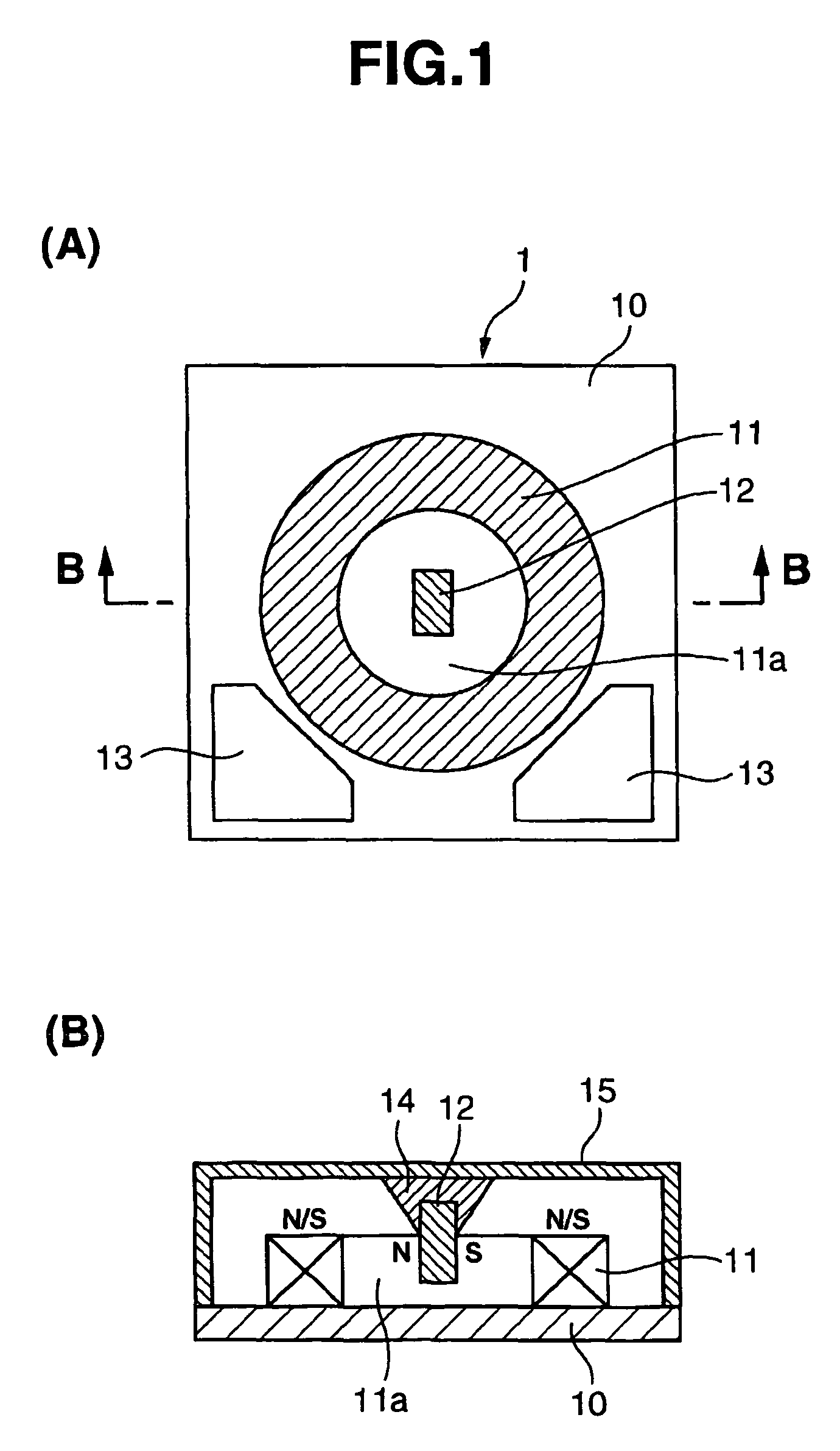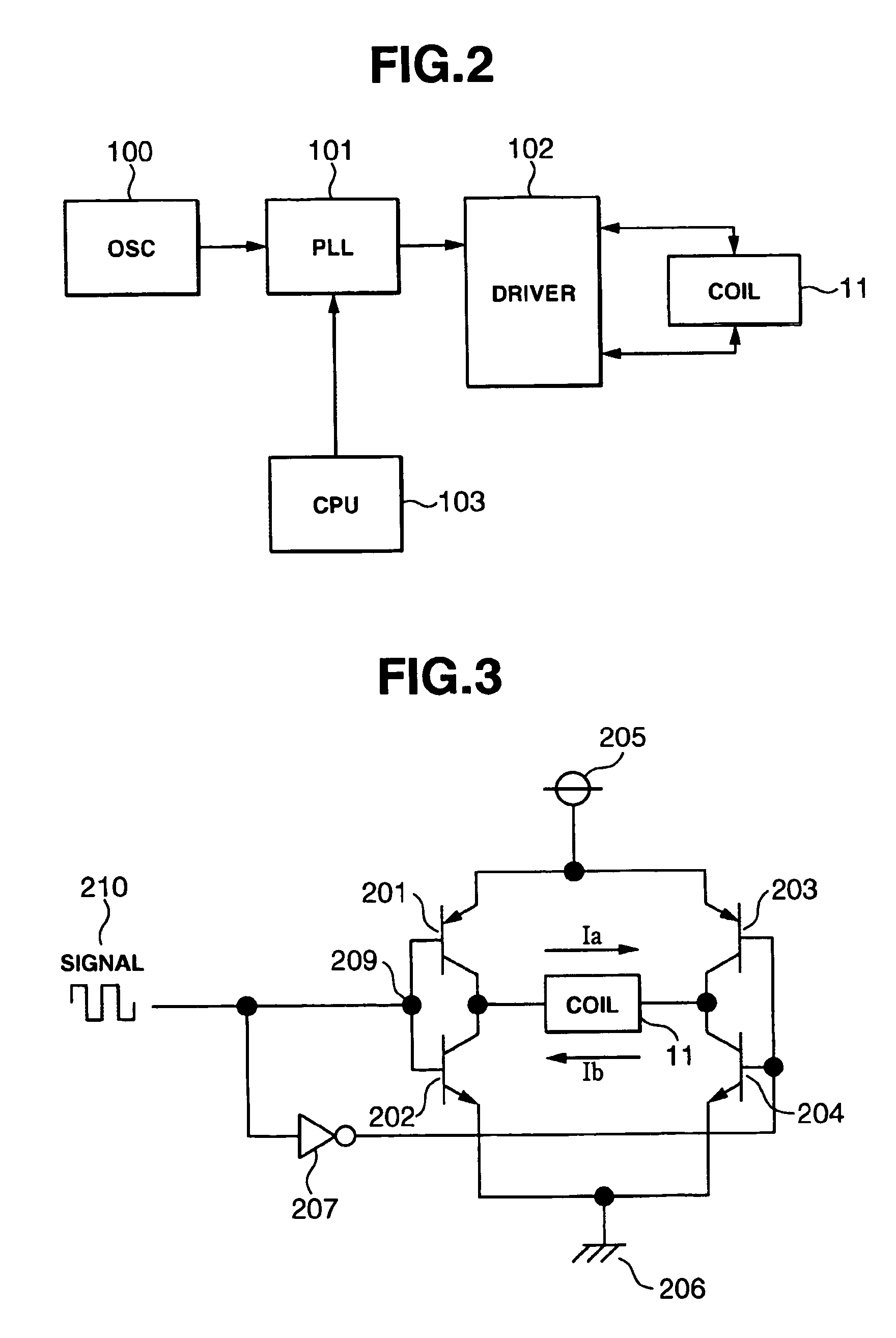Drive mechanism
a technology of drive mechanism and drive unit, which is applied in the direction of mechanical vibration separation, transducer diaphragm, instruments, etc., can solve the problems of generating significant stress, preventing the realization of miniaturization and weight saving of portable terminal devices, and no conventional example of employing oscillation of magnetic body as driving sour
- Summary
- Abstract
- Description
- Claims
- Application Information
AI Technical Summary
Benefits of technology
Problems solved by technology
Method used
Image
Examples
embodiment 1
[0080]Next, Embodiment 1 of the present invention is described with reference to the drawings. Incidentally, the first magnetic material corresponds to a coil, and the second magnetic material corresponds to a permanent magnet.
[0081]Foremost, the drive unit pertaining to Embodiment 1 of the present is explained. FIG. 1 is a diagram showing the structure of the drive unit pertaining to Embodiment 1, and FIG. 1(A) is a top view, and FIG. 1(B) is the B-B cross section of FIG. 1(A). FIG. 2 is a circuit structure diagram of the drive unit shown in FIG. 1. FIG. 3 is a circuit structure diagram for driving the coil shown in FIG. 1.
[0082]In FIG. 1(A), the drive unit 1 comprises a substrate 10, a coil 11 for generating magnetism, a permanent magnet 12, and a drive circuit 13 for driving the coil 11. With the coil 11 as the fixed part, one face thereof is mounted on and fixed to the substrate 10. With the permanent magnet 12 as the transducer, one end thereof is retained with a cover as the r...
embodiment 2
[0093]Next, the drive unit pertaining to Embodiment 2 of the present invention is explained. FIG. 4 is a cross section of the drive unit pertaining to Embodiment 2. Incidentally, with respect to the structure of the drive unit pertaining to Embodiment 2, points differing from the drive unit pertaining to Embodiment 1 will only be explained, and the structural components that are the same as those of Embodiment 1 are given the same reference numerals.
[0094]In FIG. 4, the difference between the drive unit pertaining to Embodiment 2 and the drive unit pertaining to Embodiment 1 is in that the buffering holder 16 retaining the permanent magnet 12, which is a transducer, is provided to the substrate 10 side and not on the cover 15 side of the case. According to this structure, the permanent magnet 12 will oscillate toward the polar direction with the portion retained by the buffering holder 16 provided on the substrate 10 side as the fulcrum.
[0095]The operation of the drive unit 1 pertai...
embodiment 3
[0097]Next, the drive unit pertaining to Embodiment 3 of the present invention is explained. FIG. 5 is a cross section of the drive unit pertaining to Embodiment 3. Incidentally, with respect to the structure of the drive unit pertaining to Embodiment 3, points differing from the drive unit pertaining to Embodiment 1 will only be explained, and the structural components that are the same as those of Embodiment 1 are given the same reference numerals.
[0098]In FIG. 5, the difference between the drive unit pertaining to Embodiment 3 and the drive unit 1 pertaining to Embodiment 1 is in that the permanent magnet 12 as a transducer is retained with a buffering supporter 17.
[0099]The operation of the drive unit 1 pertaining to Embodiment 3 is substantially the same as the drive unit 1 pertaining to Embodiment 1, and the detailed description thereof is omitted. With the drive unit 1 pertaining to Embodiment 3, in addition to the effect of the drive unit 1 pertaining to Embodiment 1, the ar...
PUM
| Property | Measurement | Unit |
|---|---|---|
| frequency | aaaaa | aaaaa |
| frequency | aaaaa | aaaaa |
| frequency | aaaaa | aaaaa |
Abstract
Description
Claims
Application Information
 Login to View More
Login to View More - R&D
- Intellectual Property
- Life Sciences
- Materials
- Tech Scout
- Unparalleled Data Quality
- Higher Quality Content
- 60% Fewer Hallucinations
Browse by: Latest US Patents, China's latest patents, Technical Efficacy Thesaurus, Application Domain, Technology Topic, Popular Technical Reports.
© 2025 PatSnap. All rights reserved.Legal|Privacy policy|Modern Slavery Act Transparency Statement|Sitemap|About US| Contact US: help@patsnap.com



